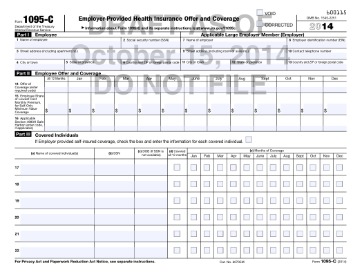Content

That could be the case if you expect your business income—and hence your business tax bracket—to rise in the future. A higher tax bracket could make the deduction worth more in later years. If the business is an S corporation, partnership or multi-member LLC, it cannot pass the Section 179 deduction on to shareholders, partners or members unless the business has income. The individual must also have earned income to take the deduction. The asset must be tangible personal property, including software .
For example, you can account for the use of a truck to make deliveries at several locations that begin and end at the business premises and can include a stop at the business in between deliveries by a single record of miles driven. You can account for the use of a passenger automobile by a salesperson for a business trip away from home over a period of time by a single record of miles traveled. John Maple is the sole proprietor of a plumbing contracting business.
What assets cannot be depreciated?
At AssetWorks, we understand that managing assets can be a challenge. Regardless, we recommend that all organizations have guidelines in place for how they plan to estimate useful life. When you access this website or use any of our mobile applications we may automatically collect information such as standard details and identifiers for statistics or marketing purposes. You can consent to processing for these purposes configuring your preferences below. If you prefer to opt out, you can alternatively choose to refuse consent.
- The property has a recovery period of at least 10 years or is transportation property.
- You can choose to use the income forecast method instead of the straight line method to depreciate the following depreciable intangibles.
- In accounting, when the recorded cost of a fixed asset is reduced systematically until the value of the asset becomes zero or negligible, it is known as depreciation.
- Use this value with depreciation methods that calculate by periods or when period adjustments are needed.
To calculate composite depreciation rate, divide depreciation per year by total historical cost. To calculate depreciation expense, multiply the result by the same total historical cost. The result, not surprisingly, will equal the total depreciation per year again. Cost generally is the amount paid for the asset, including all costs related to acquiring and bringing the asset into use. In some countries or for some purposes, salvage value may be ignored. The rules of some countries specify lives and methods to be used for particular types of assets.
How to Determine the Useful Life of an Asset
The date information is passed into the Asset Account Balance Close batch application when the system processes projection balances in final mode. If you enter two different companies in data selection that have two different, normal number of periods, then the annual close runs incorrectly for one of them. Correct this situation by purging the projections and rerunning the close correctly.

It is figured before deducting the section 179 deduction, any net operating loss deduction, and special deductions (as reported on the corporation’s income tax return). Each partner adds the amount allocated from partnerships (shown on Schedule K-1 , Partner’s Share of Income, Deductions, Credits, etc.) to their nonpartnership section 179 costs and then applies the dollar limit to this total. To determine any reduction in the dollar limit for costs over $2,700,000, the partner does not include any of the cost of section 179 property placed in service by the partnership. After the dollar limit (reduced for any nonpartnership section 179 costs over $2,700,000) is applied, any remaining cost of the partnership and nonpartnership section 179 property is subject to the business income limit.
Video Explanation of Depreciation Methods
This is calculated by taking the cost of the asset and subtracting the accumulated depreciation. Units Of Production MethodUnit of production depreciation is an activity method to ascertain asset value through its usage. It is evaluated as the multiplication of depreciation rate per unit and units produced per year, where depreciation per unit is the asset’s cost minus salvage value divided by a particular year’s production units. In the balance sheet, the amount shown as a depreciation expense charged goes into the accumulated depreciation account. By allocating the cost of a purchased asset over the period of time when it is expected to be in use, businesses can deduct a smaller amount of the cost over several years instead of one large deduction in the year it was purchased.
What are the 3 methods of depreciation?
- Straight Line Method.
- Written Down Value Method.
- Units of production method.
If you did not make an election to allocate your costs in this way, you and your spouse would have to allocate $390,000 ($780,000 × 50% (0.50)) to each of you. Property used by governmental units or foreign persons or entities, Depreciation Of Assets except property used under a lease with a term of less than 6 months. Are met, you cannot elect the section 179 deduction for the following property. Certain property does not qualify for the section 179 deduction.
When using a declining balance method, you apply the same depreciation rate each year to the adjusted basis of your property. You must use the applicable convention for the first tax year and you must switch https://quick-bookkeeping.net/best-expense-tracker-apps-of-2021/ to the straight line method beginning in the first year for which it will give an equal or greater deduction. Some systems specify lives based on classes of property defined by the tax authority.
The cumulative depreciation of an asset up to a single point in its life is called accumulated depreciation. The carrying value, or book value, of an asset on a balance sheet is the difference between its purchase price and the accumulated depreciation. For book purposes, most businesses depreciate assets using the straight-line method. The valuation performed for purposes of measuring the intangible asset’s fair value may also provide a reasonable starting point to discern the expected pattern of economic benefit of an intangible asset.
If this information isn’t readily available, you can estimate the percentage that went toward the land versus the amount that went toward the building by looking at the taxable value. Its salvage value is $500, and the asset has a useful life of 10 years. An intangible asset can’t be touched—but it can still be bought or sold. Examples include a patent, copyright, or other intellectual property. The IRS also refers to assets as “property.” It can be either tangible or intangible. Here is a graph showing the book value of an asset over time with each different method.
See the regulations under section 263A of the Internal Revenue Code for information on the uniform capitalization rules that apply to farm property. Depreciate trees and vines bearing fruits or nuts under GDS using the straight line method over a recovery period of 10 years. Enter the basis for depreciation under column in Part III of Form 4562. For information about how to determine the cost or other basis of property, see What Is the Basis of Your Depreciable Property? However, if this dual-use property does represent a significant portion of your leasing property, you must prove that this property is qualified rent-to-own property.
